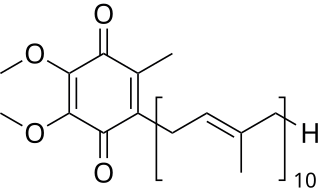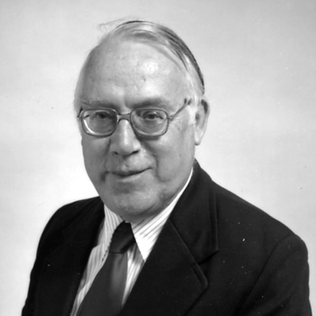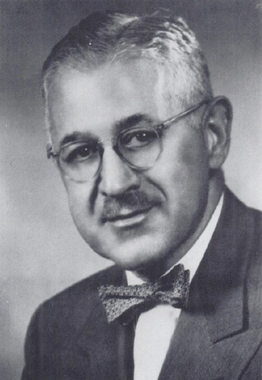Related Research Articles
The following outline acts as an overview of and topical guide to chemistry:

Lipids are a broad group of organic compounds which include fats, waxes, sterols, fat-soluble vitamins, monoglycerides, diglycerides, phospholipids, and others. The functions of lipids include storing energy, signaling, and acting as structural components of cell membranes. Lipids have applications in the cosmetic and food industries, and in nanotechnology.

Organic chemistry is a subdiscipline within chemistry involving the scientific study of the structure, properties, and reactions of organic compounds and organic materials, i.e., matter in its various forms that contain carbon atoms. Study of structure determines their structural formula. Study of properties includes physical and chemical properties, and evaluation of chemical reactivity to understand their behavior. The study of organic reactions includes the chemical synthesis of natural products, drugs, and polymers, and study of individual organic molecules in the laboratory and via theoretical study.

Coenzyme Q10 (CoQ10), also known as ubiquinone, is a naturally occurring biochemical cofactor (coenzyme) and an antioxidant produced by the human body. It can also be obtained from dietary sources, such as meat, fish, seed oils, vegetables, and dietary supplements. CoQ10 is found in many organisms, including animals and bacteria.

Spectrophotometry is a branch of electromagnetic spectroscopy concerned with the quantitative measurement of the reflection or transmission properties of a material as a function of wavelength. Spectrophotometry uses photometers, known as spectrophotometers, that can measure the intensity of a light beam at different wavelengths. Although spectrophotometry is most commonly applied to ultraviolet, visible, and infrared radiation, modern spectrophotometers can interrogate wide swaths of the electromagnetic spectrum, including x-ray, ultraviolet, visible, infrared, and/or microwave wavelengths.

A biogenic substance is a product made by or of life forms. While the term originally was specific to metabolite compounds that had toxic effects on other organisms, it has developed to encompass any constituents, secretions, and metabolites of plants or animals. In context of molecular biology, biogenic substances are referred to as biomolecules. They are generally isolated and measured through the use of chromatography and mass spectrometry techniques. Additionally, the transformation and exchange of biogenic substances can by modelled in the environment, particularly their transport in waterways.
Dolichol refers to any of a group of long-chain mostly unsaturated organic compounds that are made up of varying numbers of isoprene units terminating in an α-saturated isoprenoid group, containing an alcohol functional group.

Jeffrey Barry Harborne FRS was a British chemist who specialised in phytochemistry. He was Professor of Botany at the University of Reading, 1976–93, then Professor emeritus. He contributed to more than 40 books and 270 research papers and was a pioneer in ecological biochemistry, particularly in the complex chemical interactions between plants, microbes and insects.
Sir Ian Heilbron DSO FRS was a Scottish chemist, who pioneered organic chemistry developed for therapeutic and industrial use.
The Biochemical Society is a learned society in the United Kingdom in the field of biochemistry, including all the cellular and molecular biosciences. It was founded in 1911 and acquired the existing Biochemical Journal the following year. The society additionally publishes the journals Clinical Science and Biochemical Society Transactions via its publishing arm, Portland Press. It awards the Colworth Medal and formerly awarded the CIBA Medal. As of 2024, the president is Julia Goodfellow.
The Willard Gibbs Award, presented by the Chicago Section of the American Chemical Society, was established in 1910 by William A. Converse (1862–1940), a former Chairman and Secretary of the Chicago Section of the society and named for Professor Josiah Willard Gibbs (1839–1903) of Yale University. Gibbs, whose formulation of the Phase Rule founded a new science, is considered by many to be the only American-born scientist whose discoveries are as fundamental in nature as those of Newton and Galileo.

Sir Alan Rushton Battersby (4 March 1925 – 10 February 2018) was an English organic chemist best known for his work to define the chemical intermediates in the biosynthetic pathway to vitamin B12 and the reaction mechanisms of the enzymes involved. His research group was also notable for its synthesis of radiolabelled precursors to study alkaloid biosynthesis and the stereochemistry of enzymic reactions. He won numerous awards including the Royal Medal in 1984 and the Copley Medal in 2000. He was knighted in the 1992 New Year Honours. Battersby died in February 2018 at the age of 92.
Richard Tecwyn Williams FRS was a Welsh biochemist who founded the systematic study of xenobiotic metabolism with the publication of his book Detoxication mechanisms in 1947. This seminal book built on his earlier work on the role of glucuronic acid in the metabolism of borneol.

Sir Alan Walsh FAA FRS was a British-Australian physicist, originator and developer of a method of chemical analysis called atomic absorption spectroscopy.
William Dale Phillips was an American chemist, nuclear magnetic resonance spectroscopist, federal science policy advisor and member of the National Academy of Sciences. He was born October 10, 1925, in Kansas City, Missouri and died in St. Louis, Missouri, on December 15, 1993.
Vitamin A2 is a subcategory of vitamin A.
George Alan Garton FRS was a British biochemist, and Head of the Lipid Biochemistry Department, at the Rowett Research Institute, now part of the University of Aberdeen.

Paul György (April 7, 1893 – March 1, 1976) was a Hungarian-born American biochemist, nutritionist, and pediatrician best known for his discovery of three B vitamins: riboflavin, B6, and biotin. Gyorgy was also well known for his research into the protective factors of human breast milk, particularly for his discoveries of Lactobacillus bifidus growth factor activity in human milk and its anti-staphylococcal properties. He was a recipient of the National Medal of Science in 1975 from President Gerald Ford.
Selig Hecht was an American physiologist who studied photochemistry in photoreceptor cells.

Frank William Ernest Gibson was an Australian biochemist and molecular biologist, Howard Florey Professor of Medical Research in the John Curtin School of Medical Research, and a Fellow of the Royal Society of London He undertook his most notable work at the University of Melbourne. He and his research group were responsible for the discovery of chorismic acid. He later worked at The Australian National University (ANU).
References
- 1 2 3 4 5 Rees, D. Ben. "MORTON, RICHARD ALAN (1899 - 1977), biochemist". Dictionary of Welsh Biography. Retrieved 20 October 2022.
- 1 2 Glover, J; Pennock, J F; Pitt, G A J; Goodwin, Trevor Walworth (1978). "Richard Alan Morton, 1899 - 1977". Biographical Memoirs of Fellows of the Royal Society. 24: 408–442. doi: 10.1098/rsbm.1978.0013 . S2CID 186209020.
- 1 2 3 4 5 Goodwin, T W (1977). "R. A. Morton". Nature. 266 (5600): 394. Bibcode:1977Natur.266..394G. doi: 10.1038/266394a0 . S2CID 31211784.